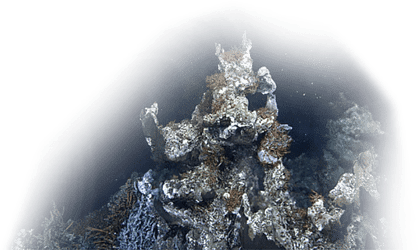BC Ferries takes a closer look at the 2016 spring bloom in the Strait of Georgia
Every year, March brings two kinds of spring blooms to the temperate British Columbia coast: one involves an annual flower count, which is the envy of the country; the other turns the Salish Sea green with an explosion of marine productivity. BC Ferries plays an important role on both counts, bringing visitors across the Strait of Georgia to enjoy the Island’s blossoms while simultaneously hosting Ocean Networks Canada’s (ONC) instruments that collect marine data in the Strait of Georgia.
ONC measures ocean properties at the sea surface using advanced instruments installed onboard three ferry routes. The route from Departure Bay to Horseshoe Bay was instrumented in July 2015, making 2016 the first year all three ferries captured the start and progression of the spring phytoplankton bloom, as measured by chlorophyll concentration and fluorescence (Gower et al, 2013).
The timing and extent of the spring bloom is thought to have a significant influence on the food web in the entire Strait of Georgia ecosystem, making these detailed data essential for truly capturing the spring bloom. The increased geographic coverage enabled by the ferries, along with measurements taken continuously as they sail, helps to magnify our understanding of this annual event.
A map of the southern-central Strait of Georgia with the three instrumented BC Ferries routes identified by colour. BLUE: Departure Bay to Horseshoe Bay; RED: Duke Point to Tsawwassen; Green: Swartz Bay to Tsawwassen.
Forming the base of the food web, phytoplankton are small plant-like organisms that provide food for zooplankton, the microscopic creatures that sustain small fish, salmon and other marine species, which in turn feed larger mammals.
The research community is interested in both where and when the spring bloom occurs. If phytoplankton growth is out of sync with other biological events or environmental features—such as river flow, snow melt or salmon fry arriving in the Strait—then the whole system may be less productive. For example, a very early or very late bloom could be missed by the zooplankton, which are on a more defined seasonal reproductive cycle. Timing is critical.
We know that bloom timing can vary by up to six weeks depending on the year (Allen and Wolfe, 2013). The 2014 bloom started in early April, later than usual. This was four weeks later than 2015’s bloom, which started in early March, the earliest on record since 2005.
The development of phytoplankton biomass (mg Chl m3) through the spring of 2016. YearDay 60 is March 1, 2016. The colours correspond to ferry routes. BLUE: Departure Bay to Horseshoe Bay; RED: Duke Point to Tsawwassen; Green: Swartz Bay to Tsawwassen.
This year, the timing of the bloom is similar to the long-term average; it started on Wednesday, 16 March 2016, as indicated by elevated chlorophyll and dissolved oxygen. All three ferries captured the biomass peak of this year’s bloom during 21-23 March (days 81 – 83). The temporal pattern of phytoplankton biomass development is consistent between routes with no significant lags.
To gather these important data it is crucial to routinely maintain and clean these advanced ocean observing sensors. On each ferry the sensors are cleaned and calibrated, and water samples are collected and brought back for further analysis. This regular servicing is required because sensors are subject to heavy fouling from biological growth.
Allen, S.E., and Wolfe, M.A. (2013). Hindcast of the timing of the spring phytoplankton bloom in the Strait of Georgia, 1968–2010. Progress in Oceanography. 115: 6-13
Gower, J., King, S., Statham, S., Fox,R., and Young, E. (2013). The Malaspina Dragon: A newly-discovered pattern of the early spring bloom in the Strait of Georgia, British Columbia, Canada. Progress in Oceanography. 115: 181-188
